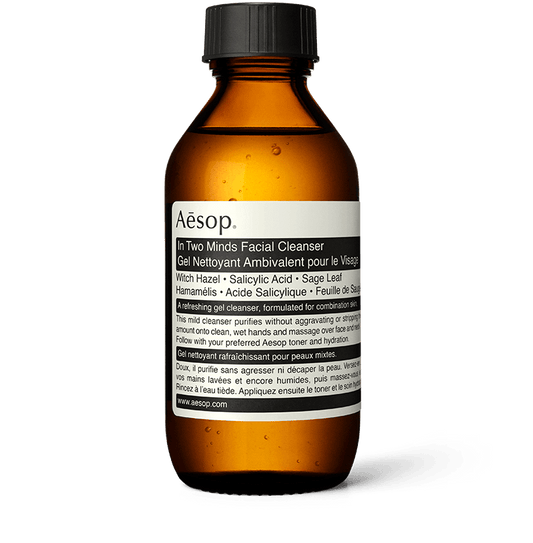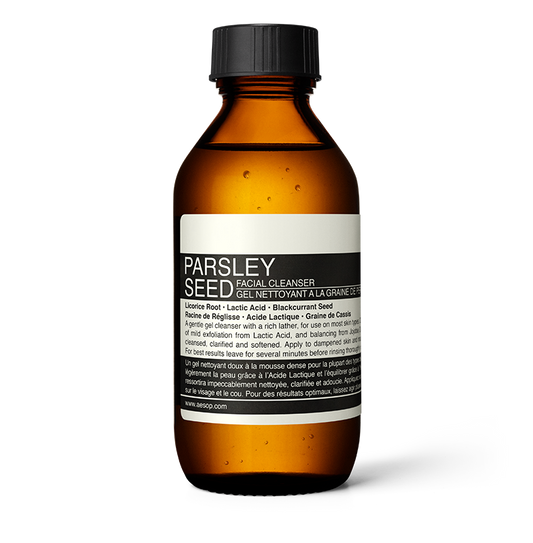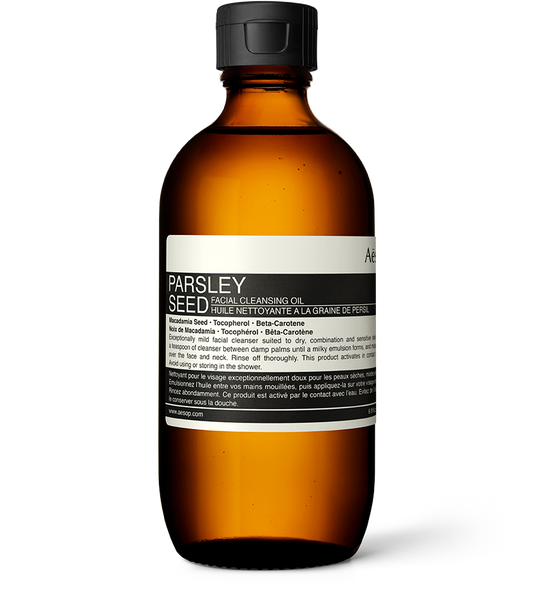Lessons from the lab
A guide to exfoliation
Things build up. Stress. Deadlines. Dust on the windowpane.
And yet, trying as it may be, every compounded frustration offers an opportunity to enjoy a very singular kind of satisfaction: the clearing away of that which is unwanted. Taking deep breaths, and feeling tension fade. Crossing duties off the to-do list. Wiping the glass to gain a crisp view of the world outside.
The shedding of unwelcome build-up is the crux of exfoliation. And when the obstacle to a desired state is removed—relief. Order. An unobstructed view.

The purpose of exfoliation
However the task is undertaken, exfoliation is an integral part of caring for the skin. A process called desquamation causes cells formed in the innermost layers of the epidermis to travel upwards, or outwards, until they reach the stratum corneum—the outermost layer of skin. Here, dead skin cells are naturally shed or sloughed away, but exfoliation aids in their removal, helping maintain efficient cell turnover.

Exfoliation for different skin types
Just as all skin benefits from cleansing, toning and hydrating—a matter outlined within the series of practical steps in the article ‘How to curate a skin care regimen’—so every skin type is aided by regular, tailored exfoliation. This is particularly the case for combination and oily skin, as exfoliation helps ease congestion and clarify the surface.
Drier skin types also benefit from diligent exfoliation—removing dead cells helps address a dull or patchy appearance, and prepares the skin for hydration to follow.
Exfoliation can be just as beneficial for sensitive skin, but bear in mind: a delicate approach is always recommended for skin prone to reactivity and aggravation. Those with sensitive skin have been shown to have a thinner stratum corneum, with decreased corneocyte—skin cell—area. As a result, the skin’s barrier properties tend to be compromised, and the skin is more likely to be aggravated by overzealous exfoliation.
Before employing any exfoliant on sensitive skin, conduct a patch test to confirm skin compatibility.
Chemical and physical exfoliation
Hear the word exfoliant mentioned, and something granular and abrasive likely comes to mind. While this mental image is certainly descriptive of most physical exfoliants, it does not always apply to those of the chemical variety.

Chemical exfoliation
Put simply, a chemical exfoliant breaks down the bonds between skin cells, helping to accelerate the shedding of those cells. Some chemical exfoliants will act exclusively on the surface of the skin, while others can penetrate the pores and help clear dead cells and other debris—or sebum—that may build up inside.
Chemical exfoliants work by reducing corneocyte adhesion—breaking down the interactions between surface cells. They include Hydroxy Acids, which can be used to provide mild chemical exfoliation. Alpha-Hydroxy Acids (AHAs) are water-soluble. Lactic Acid, the gentlest member of the AHA family, is an ingredient in a number of our formulations. Beta-Hydroxy Acids (BHAs)—such as Salicylic Acid—are oil-soluble, and assist with clearing congestion. Used appropriately, these chemical exfoliants can help improve the texture of the skin, making it softer and smoother.
Daily-use cleansers containing a chemical exfoliant—like Parsley Seed Facial Cleanser or In Two Minds Facial Cleanser—offer a mild exfoliating solution. However, for skin that is particularly dull, patchy or congested, a more robust approach involving abrasive ingredients may be necessary.
Enter: the physical exfoliant.
Physical exfoliation
Physical exfoliants are perhaps the most commonly known kind, coming in the form of a granular formulation. A physical exfoliant must be worked gently over the face or body to slough away dead cells from the stratum corneum—the outermost layer of skin.
A number of mild to moderate physically exfoliating ingredients feature in some of our formulations, including Quartz, Pumice, Walnut Shell, Tea Tree Leaf and Bamboo Stem. One or more of these elements can be found in Purifying Facial Exfoliant Paste, or Tea Tree Leaf Facial Exfoliant.
A point of pride: no Aesop product contains, or has ever contained, plastic microbeads or microplastics. Ensuring that our exfoliants are formulated without these ingredients is just one of the practices at the heart of our commitment to sustainability and ethical sourcing.
When to exfoliate
The simplest answer to the question of how often one should exfoliate is: twice weekly. No matter your skin type, exfoliating this frequently will ensure that your skin benefits from the well-timed attention.
While In Two Minds Facial Cleanser and Parsley Seed Facial Cleanser offer mild enough exfoliation to be used daily, it is best to adhere to a twice-weekly frequency with other Aesop exfoliating products. Exfoliating too often will remove healthy cells from the stratum corneum, which can impair the skin’s natural protective barrier and may lead to dry, aggravated skin.
Incorporating exfoliation into your skin care regimen
Our facial exfoliants can be included as a first or second step in a skin care regimen—instead of, blended with, or following your preferred facial cleanser.
To help deter ingrown hairs, exfoliation is an excellent first step prior to shaving. However, if removing makeup, it is best to begin with a daily-use cleanser, such as Remove, Gentle Facial Cleansing Milk or Parsley Seed Facial Cleansing Oil.
-
In Two Minds Facial Cleanser
Regular price 2 sizes from ₱1,600.00Regular priceUnit price per -
Parsley Seed Facial Cleanser
Regular price 2 sizes from ₱2,000.00Regular priceUnit price per -
Gentle Facial Cleansing Milk
Regular price 2 sizes from ₱1,750.00Regular priceUnit price per -
Parsley Seed Facial Cleansing Oil 200mL
Regular price ₱3,000.00Regular priceUnit price per








